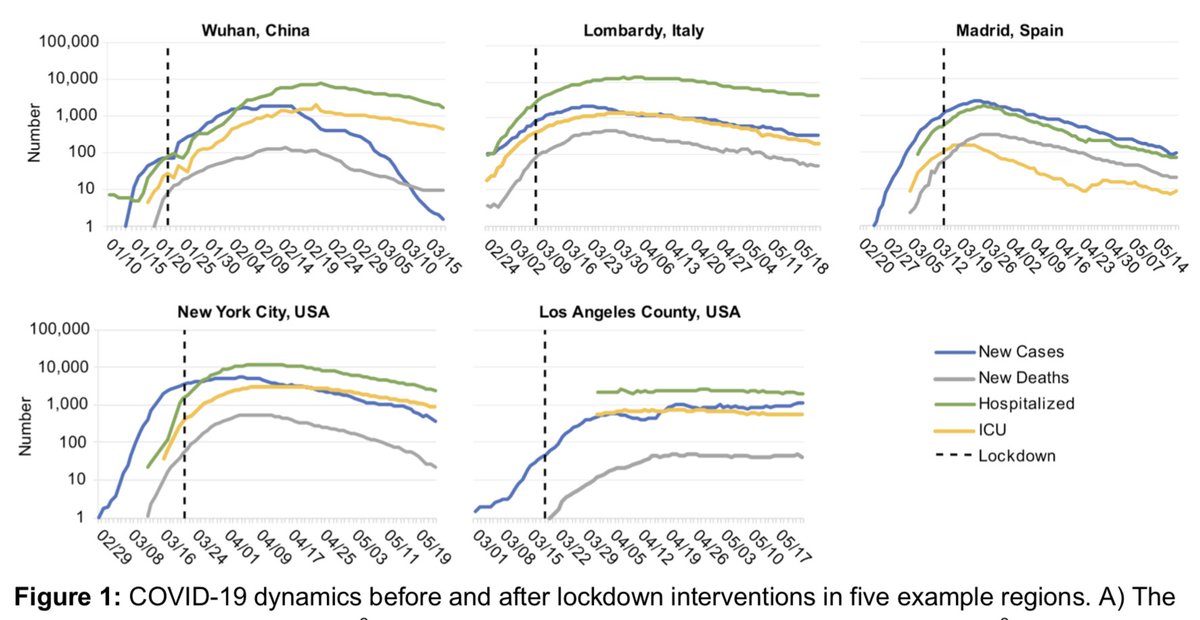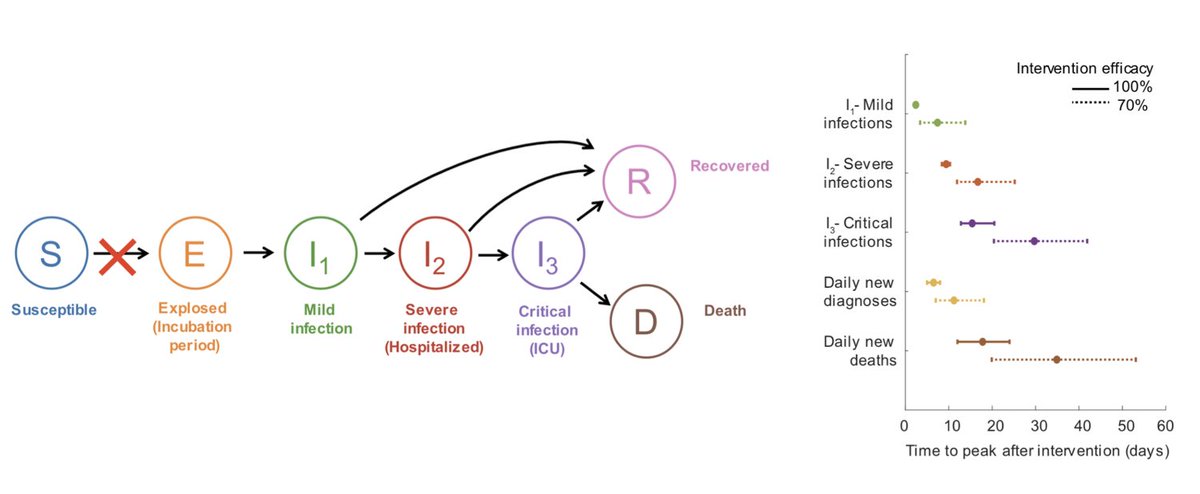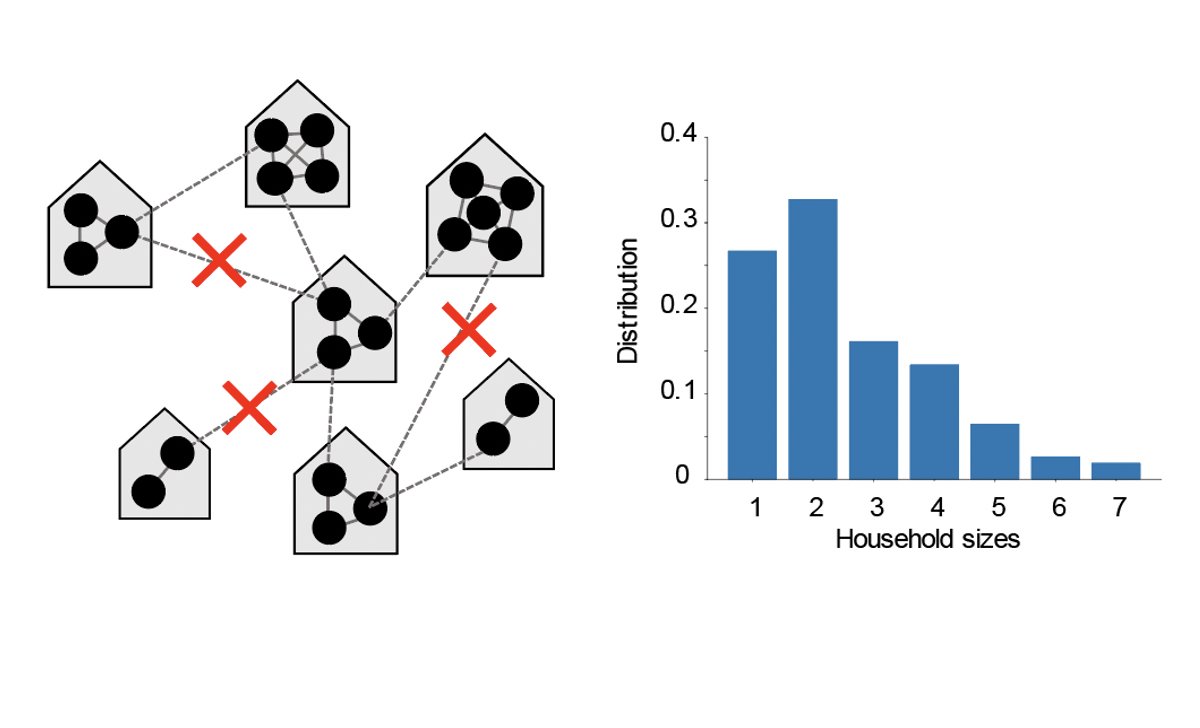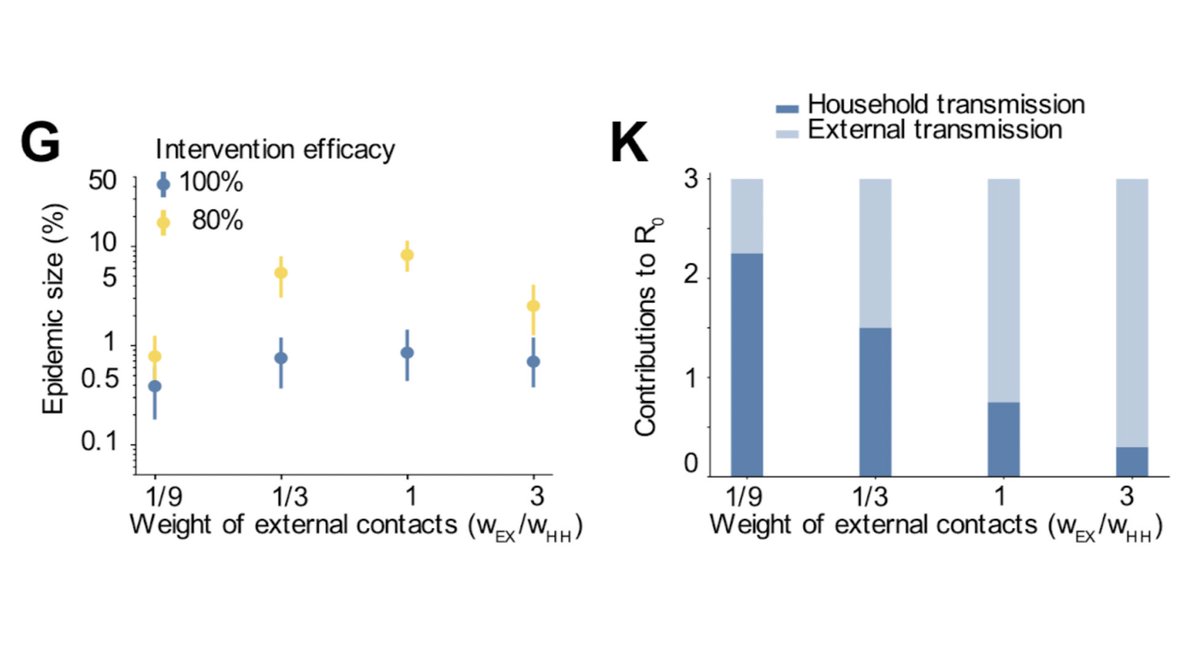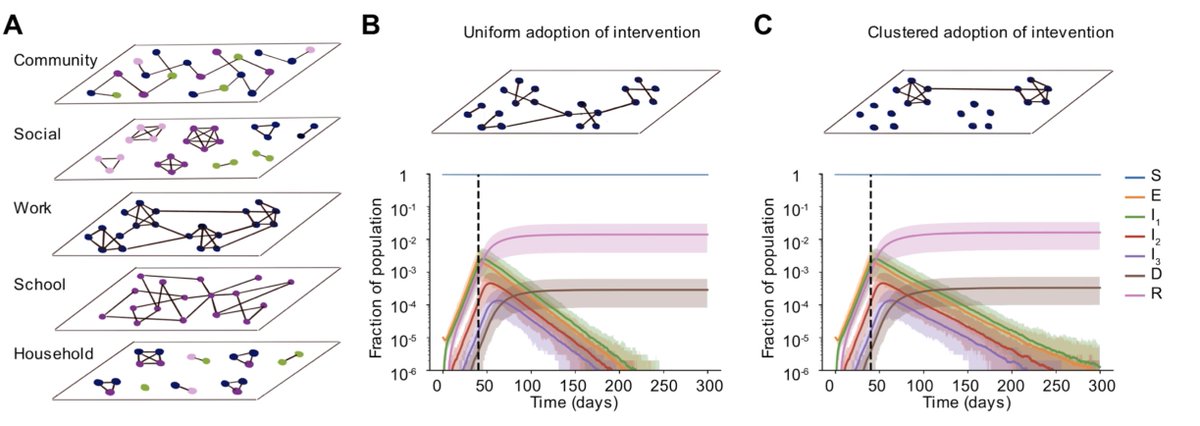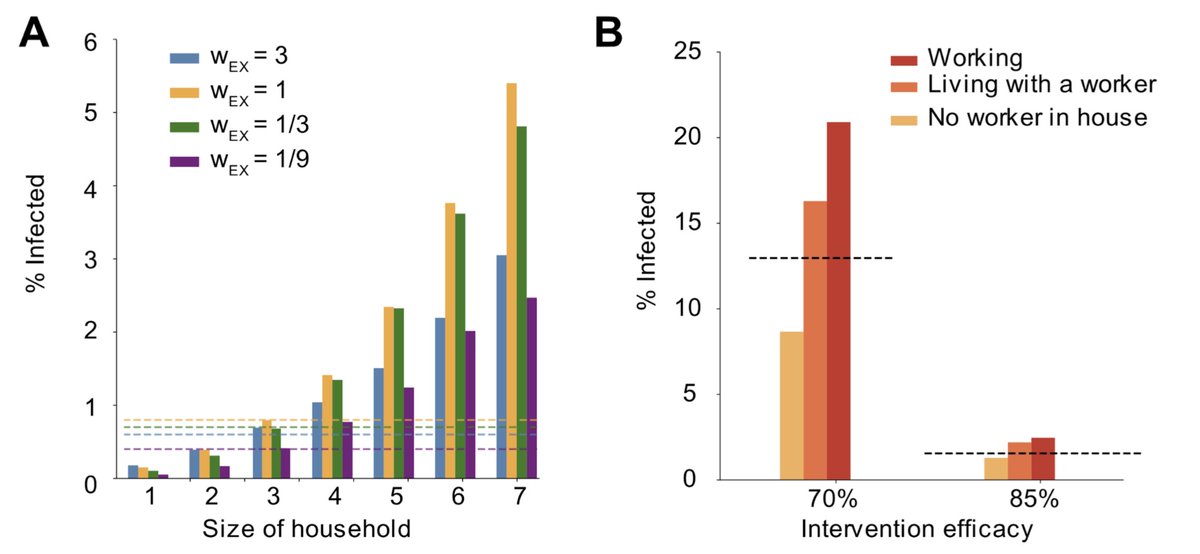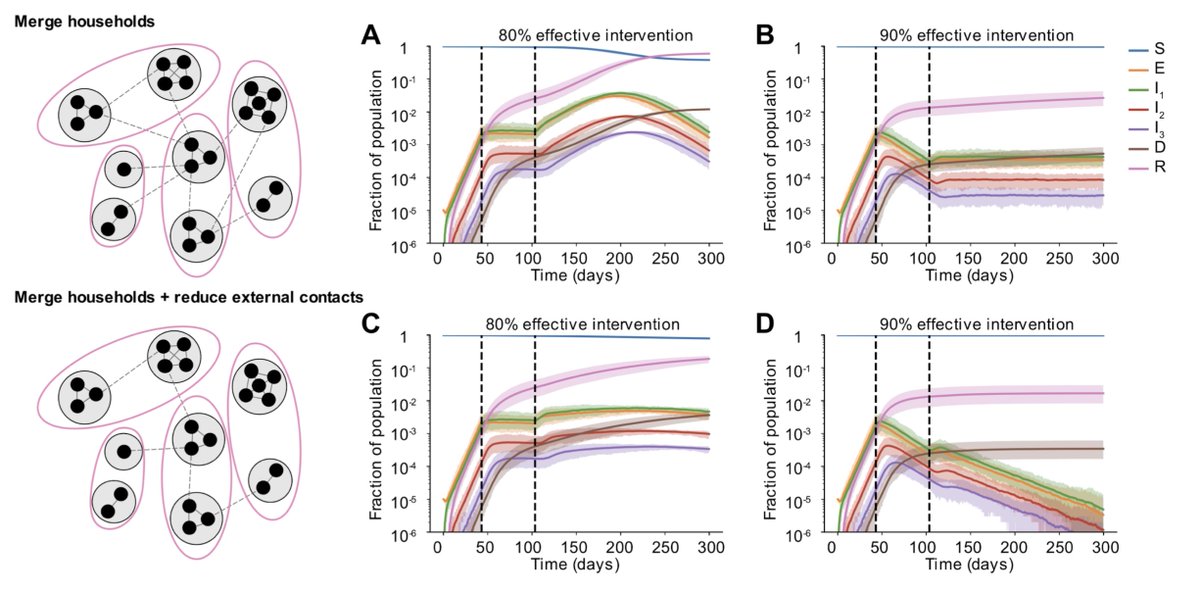New preprint out with @AnjalikaNande + @michaelzlevy + B. Adlam + J. Sheen: We dig into understanding how both the clinical course and transmission network structure of COVID-19 influence the epidemic trajectory under social distancing measures https://www.medrxiv.org/content/10.1101/2020.06.04.20121673v1">https://www.medrxiv.org/content/1... 1/
Hoping our results can be helpful in understanding the diverse dynamics we’ve seen over past few months, in making better predictions in the future, and for informing relaxation policies 2/
We started the project back in April to highlight why we expect long delays until the effects of social distancing become apparent: We stop new infections, but current ones still progress to symptoms (~5 days), hospitalization (~2 wks), or death (~3 wks), so peak is delayed 3/
But there’s another cause of delays: social distancing reduces transmission OUTSIDE the household, but not within. It could even increase household spread. Chains of transmission already seeded within houses can continue to play out, adding more generations of new infections 4/
When we looked in more detail at household transmission, things got really interesting! The relative importance of household vs external transmission for COVID-19 has a big impact on the timescale/efficacy of social distancing, and the trend is U-shaped 5/
We need more comprehensive studies tracking where COVID-19 spreads. Widely varying estimates for household transmission have been found in different studies, making predictions hard 6/
An over-reliance on contact matrix studies - large datasets which report the distribution of the # of contacts in different settings but say little about their duration/intensity/relative risk for transmission - may have obscured these sort of effects in other modeling studies 7/
Many models assume adoption of social distancing is random, but we find that clusters of non-adopters (e.g. essential workers who can’t distance) can drive up persistence times ... 8/
In realistic transmission networks we found many situations where seemingly strong social distancing led to very slow and unstable declines in cases (e.g. “flat curves”), like we’ve seen in many US regions 10/
We examined relaxation measures like forming “household bubbles”, and found they often caused resurgences (w/a few wks delay) or plateaus unless certain conditions were met 11/
Paper is still being peer-reviewed so updates expected and feedback appreciated. Feel free to use our (very fast) code for simulating infections on networks using only Google Colab: https://github.com/alsnhll/COVID19NetworkSimulations">https://github.com/alsnhll/C... 12/
Check out this fascinating related work by @dwodarz + Natalia Komarova: COVID-19 transmission network structure can lead to long plateau-like dynamics under social distancing and unexpected 2nd wave dynamics https://www.medrxiv.org/content/10.1101/2020.06.13.20130625v2">https://www.medrxiv.org/content/1...

 Read on Twitter
Read on Twitter